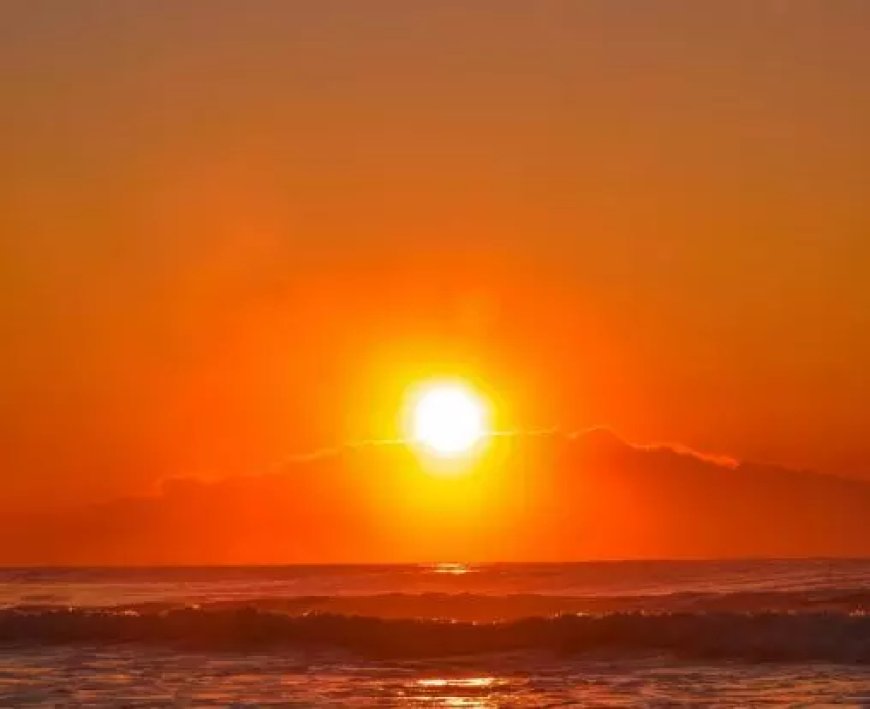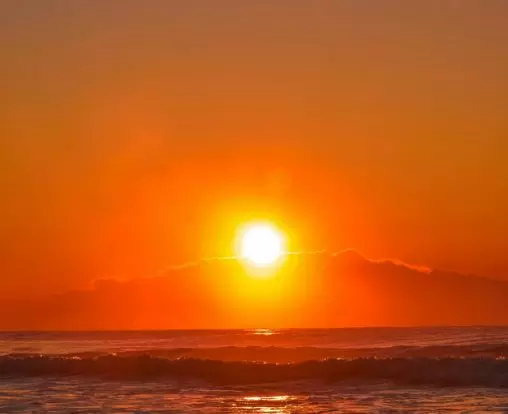Winter solstice connected with our daily lives
Hyderabad:The sun rising in the east is a universal truth we all grow up believing. However, actual observations suggest otherwise. “As children, we are taught in schools that the sun rises in the east. But if you observe the sun every day, you will find that it does so only twice a year — during the March and September equinoxes,” said Raghunandan Kumar, founder-director of the Planetary Society of India. The Northern Hemisphere will experience the winter solstice on December 21 at 2.50 pm IST. Equinoxes and solstices, key astronomical events, are familiar concepts from school. An equinox occurs when day and night are nearly equal in length, while a solstice marks the longest or shortest day of the year. Both phenomena occur twice annually — equinoxes in March and September, and solstices in June and December. Explaining how the winter solstice is a significant milestone in Earth’s journey around the Sun, Raghunandan said, “Between December and March, the sun rises somewhere between the northeast and east. On December 21, the winter solstice, it will rise in the northeast. Gradually, the sun shifts eastward, and by March 21, the spring equinox, it will rise exactly in the east.” Why does this happen? Raghunandan attributed it to Earth’s axial tilt. “The Earth’s axis is an imaginary pole running through its centre from top to bottom. The planet rotates around this axis, completing one turn each day, giving us day and night. Seasons change because Earth is tilted at an angle of 23.5 degrees as it orbits the Sun,” he explained. Solstices occur twice a year. For the Northern Hemisphere, the summer solstice falls around June 21, and the winter solstice around December 21. During the winter solstice, the Northern Hemisphere receives the least direct sunlight, resulting in cooler temperatures, while the Southern Hemisphere experiences summer due to more direct sunlight. This pattern reverses during the June solstice. December 21 brings the shortest day and longest night of the year in the Northern Hemisphere. From this day onwards, days gradually get longer until June 21, which marks the longest day and shortest night. Ancient civilisations, without telescopes or satellites, observed the sun’s path, daylight duration, and the shifting positions of sunrise and sunset to predict seasons — a crucial skill for survival. They even built monuments, like Stonehenge in England and Torreon in Machu Picchu, Peru, to track the sun’s progress. "About 200 km from Hyderabad, in Narayanpet's Mudumal village, similar stone formations called 'Niluvu Rallu' (standing stones) were created by ancient people. These formations served as a cosmic calendar, helping them predict seasonal changes based on the sun’s movement. This knowledge guided them in deciding the right time to sow and harvest crops. Understanding the four key meteorological events — two solstices and two equinoxes — was critical for planning the agricultural cycle,” said Raghunandan. Mudumal features 80 standing stones arranged in rows, each spaced 5 metres apart. These stones likely helped measure time and identify seasons. Encouraging the younger generation to follow the footsteps of their ancestors, he said, “Students should observe and document the sun’s rising and setting once every week for 54 weeks. By compiling these photos, they will notice significant changes in the sun’s altitude, time, and direction. They will also observe its connection to seasonal changes.” “It is crucial for children to understand how cosmological phenomena influence our daily lives,” Raghunandan concluded.


Hyderabad:The sun rising in the east is a universal truth we all grow up believing. However, actual observations suggest otherwise. “As children, we are taught in schools that the sun rises in the east. But if you observe the sun every day, you will find that it does so only twice a year — during the March and September equinoxes,” said Raghunandan Kumar, founder-director of the Planetary Society of India.
The Northern Hemisphere will experience the winter solstice on December 21 at 2.50 pm IST. Equinoxes and solstices, key astronomical events, are familiar concepts from school. An equinox occurs when day and night are nearly equal in length, while a solstice marks the longest or shortest day of the year. Both phenomena occur twice annually — equinoxes in March and September, and solstices in June and December.
Explaining how the winter solstice is a significant milestone in Earth’s journey around the Sun, Raghunandan said, “Between December and March, the sun rises somewhere between the northeast and east. On December 21, the winter solstice, it will rise in the northeast. Gradually, the sun shifts eastward, and by March 21, the spring equinox, it will rise exactly in the east.”
Why does this happen? Raghunandan attributed it to Earth’s axial tilt. “The Earth’s axis is an imaginary pole running through its centre from top to bottom. The planet rotates around this axis, completing one turn each day, giving us day and night. Seasons change because Earth is tilted at an angle of 23.5 degrees as it orbits the Sun,” he explained.
Solstices occur twice a year. For the Northern Hemisphere, the summer solstice falls around June 21, and the winter solstice around December 21. During the winter solstice, the Northern Hemisphere receives the least direct sunlight, resulting in cooler temperatures, while the Southern Hemisphere experiences summer due to more direct sunlight. This pattern reverses during the June solstice.
December 21 brings the shortest day and longest night of the year in the Northern Hemisphere. From this day onwards, days gradually get longer until June 21, which marks the longest day and shortest night.
Ancient civilisations, without telescopes or satellites, observed the sun’s path, daylight duration, and the shifting positions of sunrise and sunset to predict seasons — a crucial skill for survival. They even built monuments, like Stonehenge in England and Torreon in Machu Picchu, Peru, to track the sun’s progress.
"About 200 km from Hyderabad, in Narayanpet's Mudumal village, similar stone formations called 'Niluvu Rallu' (standing stones) were created by ancient people. These formations served as a cosmic calendar, helping them predict seasonal changes based on the sun’s movement. This knowledge guided them in deciding the right time to sow and harvest crops. Understanding the four key meteorological events — two solstices and two equinoxes — was critical for planning the agricultural cycle,” said Raghunandan.
Mudumal features 80 standing stones arranged in rows, each spaced 5 metres apart. These stones likely helped measure time and identify seasons.
Encouraging the younger generation to follow the footsteps of their ancestors, he said, “Students should observe and document the sun’s rising and setting once every week for 54 weeks. By compiling these photos, they will notice significant changes in the sun’s altitude, time, and direction. They will also observe its connection to seasonal changes.”
“It is crucial for children to understand how cosmological phenomena influence our daily lives,” Raghunandan concluded.






































